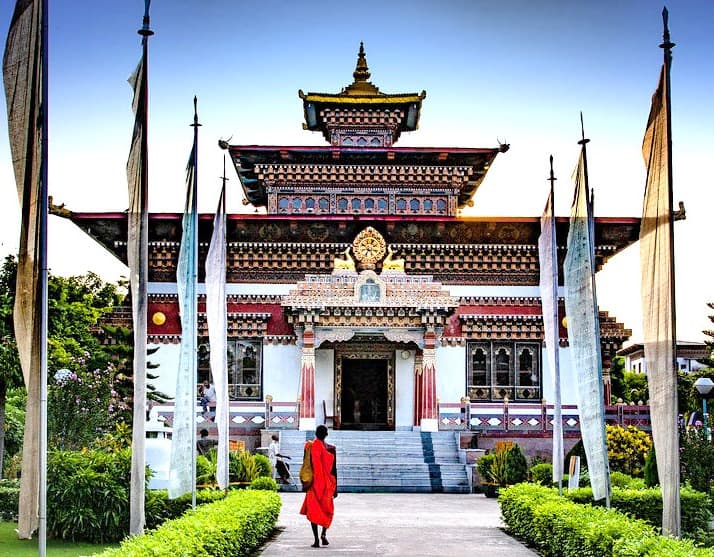Dive into the stunning landscapes of Bhutan with some of the best day hikes in the region, where the breathtaking Himalayas intertwine with deep-seated cultural traditions. From the iconic Tiger's Nest Monastery hike, showcasing dramatic cliffside vistas, to the tranquil paths of Chele La Pass with its sweeping panoramic views, Bhutan offers a diverse range of treks for all fitness levels. Whether you're in search of a spiritual journey to ancient monasteries or a relaxing stroll through verdant valleys, Bhutan's trails provide a unique fusion of natural beauty and cultural richness, ensuring every hike is a deeply enriching experience. Join us as we explore these day-long adventures that promise to be as enriching as they are exhilarating.
At Druk Holidays, we pride ourselves on being the premier choice for the best day hikes in Bhutan. Our expertly guided tours are designed to immerse you in Bhutan's breathtaking landscapes and rich cultural heritage. Whether you're ascending to the sacred Tiger's Nest Monastery or exploring the serene trails of Chele La Pass, our knowledgeable guides ensure a safe, memorable, and enriching hiking experience. With Druk Holidays, you're not just taking a hike; you're connecting with the heart of Bhutan, making every step an adventure in discovery. Join us to experience why so many hikers consider us the best in Bhutan.
Tiger's Nest Monastery Hike (Paro Taktsang)
Tiger's Nest Monastery, also known as Paro Taktsang, stands as a pinnacle of Bhutanese spiritual and architectural grandeur. Perched precariously on a cliff about 900 meters above the lush forests of Paro Valley, this site is not just a tourist destination but a profound place of pilgrimage and meditation.
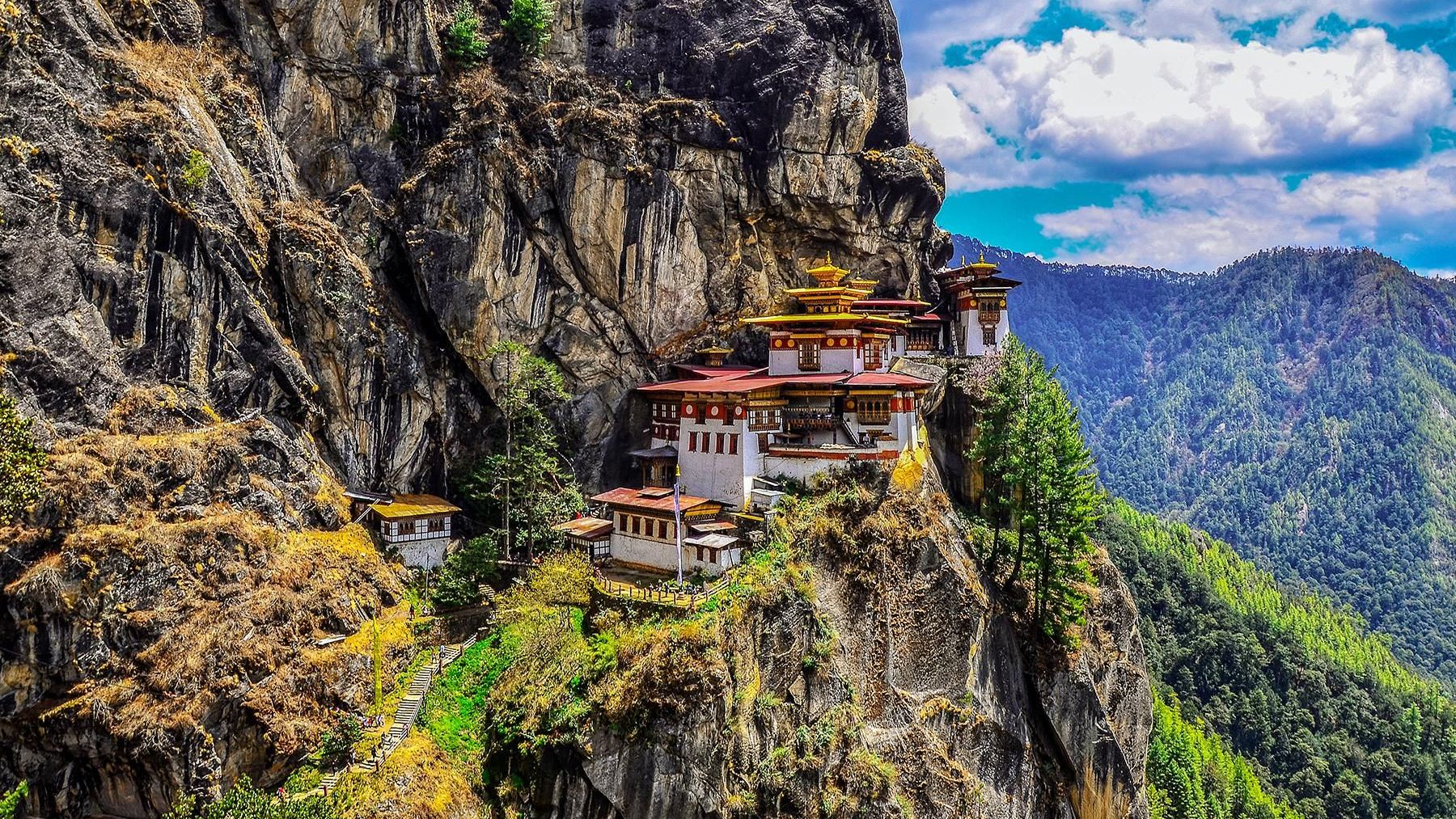
- Location and Elevation: Nestled at an elevation of approximately 3,120 meters, the journey to Paro Taktsang offers some of the most dramatic landscapes in the Himalayan kingdom.
- Historical Background: The origins of the monastery date back to the 8th century when Guru Rinpoche, a key figure in the spread of Buddhism throughout Bhutan and Tibet, is believed to have flown here on the back of a tigress. The present structure was built in 1692, encapsulating centuries of Bhutanese spiritual history.
- Architectural Splendor: The monastery’s architecture is a marvel, featuring multiple temples and residential halls, all seamlessly integrated into the cliffside. Its vibrant facades and intricate wooden carvings are typical of Bhutanese style, standing out against the stark rocky backdrop.
- Spiritual Essence: As one of Bhutan’s most sacred sites, it attracts thousands of pilgrims who come for reflection and to seek blessings. The atmosphere within its walls is charged with devotion and tranquility.
- Hiking Trail: The hike to Tiger's Nest is as captivating as the monastery itself. It typically takes between 4 to 6 hours for a round trip, winding through aromatic pine forests dotted with prayer flags. The trail is both a physical challenge and a spiritual journey, culminating in spectacular views of the monastery and valley below.
- Conservation and Visitation: Ongoing conservation efforts are crucial in preserving both the natural environment and the monastery’s ancient artworks. Visitors are encouraged to respect the sacred nature of the site, contributing to its preservation for future generations.
Tiger's Nest Monastery is undoubtedly a highlight for any visitor to Bhutan, offering an immersive experience into the heart of Bhutanese culture and spirituality. It is considered one of the best day hikes in Bhutan, combining breathtaking natural beauty with a deep cultural and spiritual heritage.
Chele La Pass Hike
The Chele La Pass, perched at an elevation of 3,810 meters, is one of the highest motorable roads in Bhutan and offers an exhilarating hiking experience. This pass serves as a vantage point between the valleys of Paro and Haa, providing stunning panoramic views of the surrounding majestic Himalayan ranges, including the sacred Mount Jomolhari.
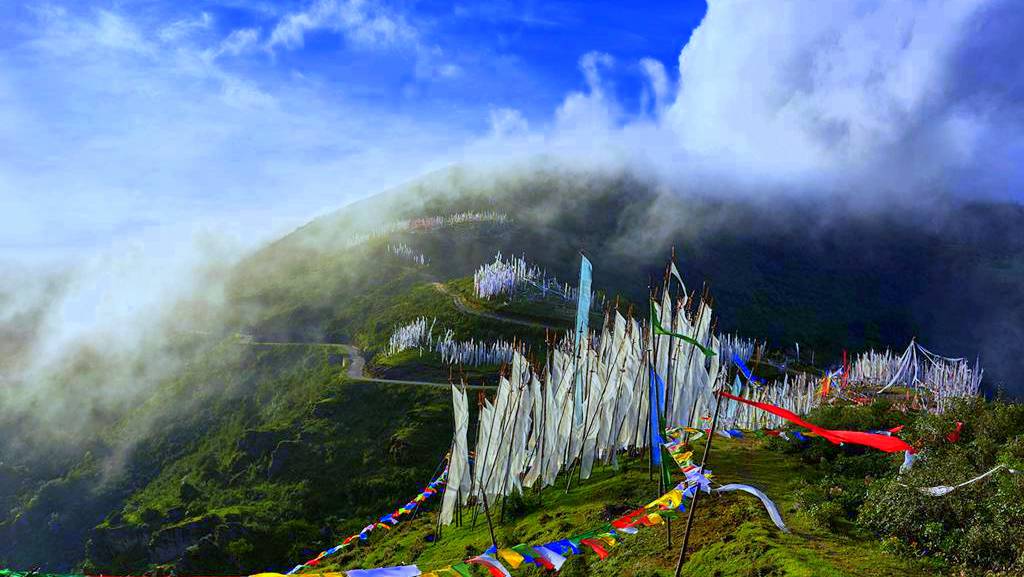
- Location and Accessibility: Chele La Pass is located about an hour’s drive from Paro, making it easily accessible for a day trip. The hike itself can be started either from the pass or from further down the road, offering varying degrees of difficulty and length.
- Hiking Experience: The hike to Chele La Pass is invigorating yet accessible to many because of its well-maintained paths. The journey usually takes about 2-3 hours to complete, depending on your pace and where you choose to start. The trail winds through dense spruce and larch forests before opening up to reveal alpine pastures and stunning views of the Himalayas.
- Flora and Fauna: The area around Chele La Pass is renowned for its diverse flora, especially the rhododendrons that bloom spectacularly in spring, painting the landscape in vivid colors. It’s also a great spot for bird watchers, with species such as blood pheasants and Himalayan monals often sighted.
- Cultural Significance: The pass is dotted with colorful prayer flags that flutter in the wind, adding to the spiritual ambiance of the hike. These flags are a common sight in Bhutan and symbolize the prayers and mantras that are believed to be spread by the wind to promote peace, compassion, strength, and wisdom.
- Photographic Opportunities: Photographers will find Chele La Pass a paradise, with its breathtaking vistas of the towering mountains and deep valleys. The clear skies and the natural beauty provide perfect conditions for capturing stunning landscapes.
- Preparation and Considerations: Due to its high altitude, it's important to be prepared for sudden changes in weather. Layered clothing, good hiking boots, and windbreakers are essential. Also, allowing time to acclimatize to the altitude can help prevent sickness.
The Chele La Pass hike is not just a physical journey but also an opportunity to connect with the natural beauty and cultural fabric of Bhutan. It’s an ideal excursion for those looking to experience high-altitude landscapes without the commitment of a multi-day trek.
Phajoding Monastery Hike
The Phajoding Monastery Hike is a popular day trek for those visiting Thimphu, offering a perfect blend of cultural immersion and natural beauty. Perched at an elevation of around 3,650 meters, the monastery is a tranquil retreat with stunning views overlooking the Thimphu Valley.
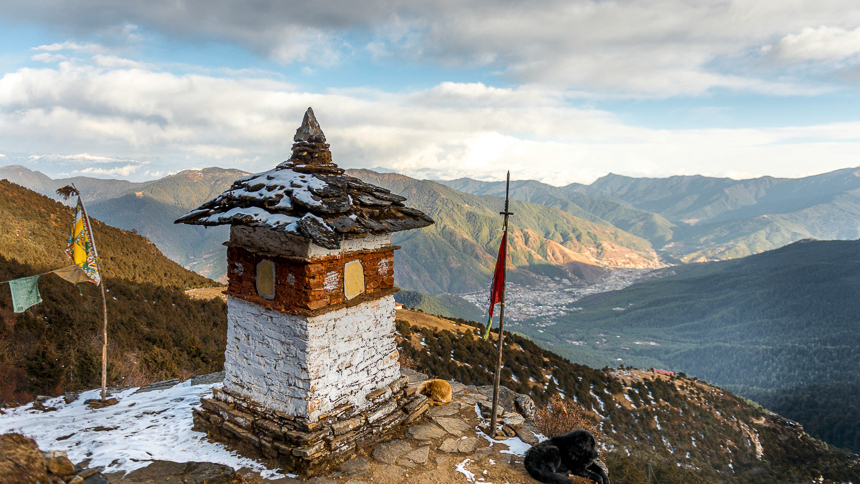
- Location and Accessibility: Phajoding Monastery is accessible via a well-marked trail starting from Thimphu, making it convenient for travelers staying in the capital. The trailhead is a short drive from the city center, and the hike up takes about 3 to 4 hours, depending on your pace.
- Hiking Experience: The trek to Phajoding is considered moderate, winding through dense forests of blue pine and rhododendrons, which are spectacularly vibrant during the blooming season in spring. As you ascend, the path offers occasional clearings that provide expansive views of the valley below.
- Cultural Significance: Phajoding Monastery is a significant religious site, housing a community of monks. Originally founded in the 13th century, the monastery has been an important center for meditation and spiritual learning. The serene environment and the presence of the monks add a profound spiritual dimension to the hike.
- Architectural Highlights: The monastery complex includes several temples and monk quarters, all built in traditional Bhutanese architectural style. The buildings are adorned with intricate wood carvings, colorful frescoes, and fluttering prayer flags that enhance the spiritual atmosphere.
- Flora and Fauna: The trail is alive with biodiversity, including a variety of bird species that make it a delight for birdwatchers. The surrounding forests also host diverse plant life, adding to the scenic beauty of the hike.
- Preparation and Considerations: Given the altitude and the steep sections of the trail, it’s important to be well-prepared with appropriate hiking gear, water, and snacks. Also, respect for the monastic lifestyle is essential, so visitors are encouraged to be mindful of the cultural and religious significance of their surroundings.
The Phajoding Monastery hike offers an enriching experience that combines physical activity with spiritual upliftment. It’s an ideal day trip for those looking to escape the hustle and bustle of Thimphu and immerse themselves in the tranquility of Bhutanese monastic life.
Khamsum Yulley Namgyal Chorten Hike
The Khamsum Yulley Namgyal Chorten Hike offers a delightful blend of cultural insight and natural beauty, leading to one of Bhutan’s most beautiful and intricately detailed chortens. Situated in the Punakha Valley, this hike is not just about reaching a destination but also about enjoying the tranquil journey along the way.
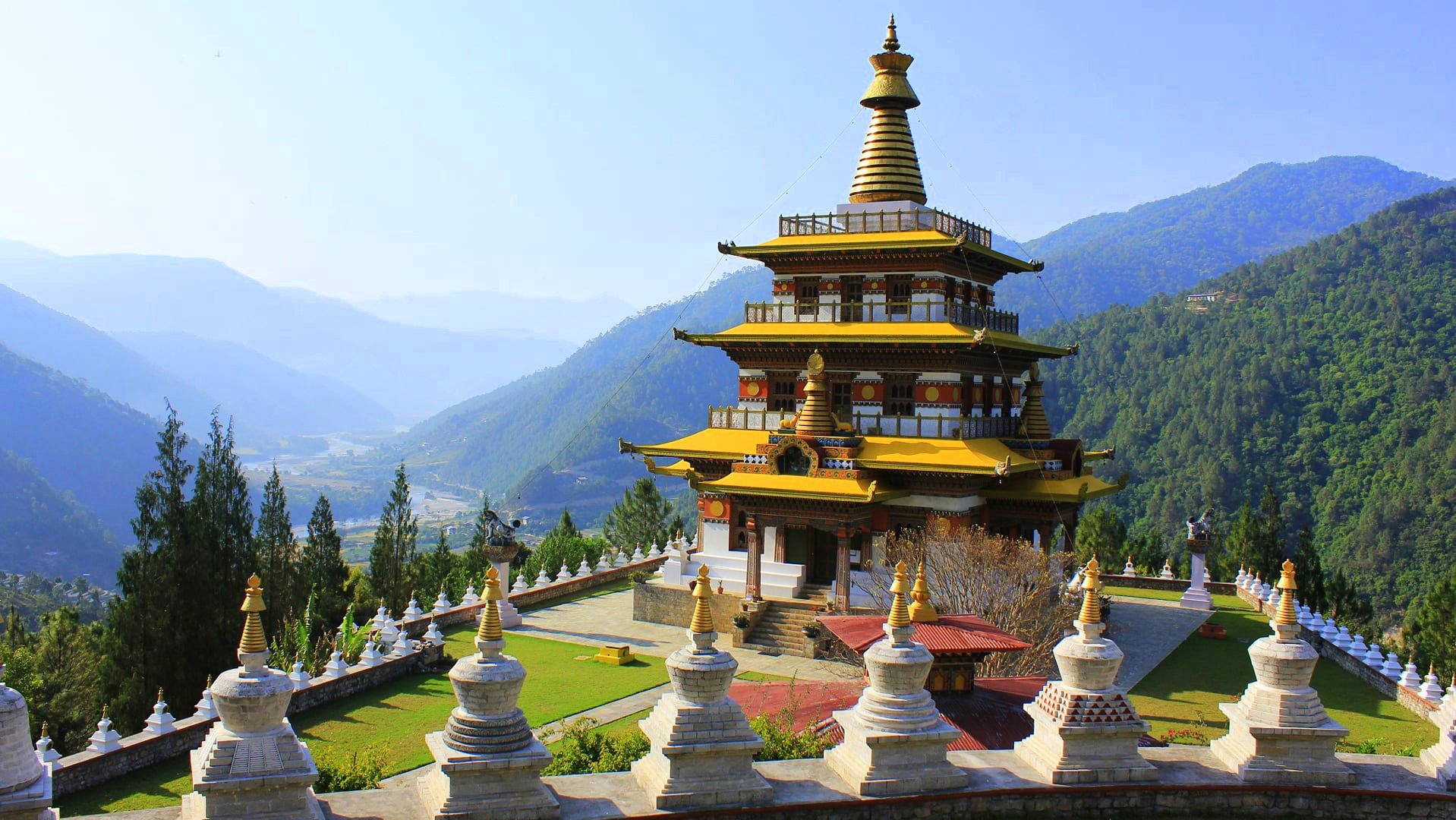
- Location and Accessibility: The chorten is located on a beautiful ridge above the Punakha Valley, approximately a 30-minute drive from Punakha followed by a gentle hike. The trail starts near the river, winding through paddy fields before ascending gently through pine forests.
- Hiking Experience: The hike to Khamsum Yulley Namgyal Chorten is relatively easy, making it suitable for most fitness levels. It typically takes about 1 to 2 hours to reach the top, depending on your pace. The path is well-maintained and offers stunning views of the surrounding countryside and the Mo Chhu River.
- Cultural Significance: The chorten itself was built to promote peace and stability in the world, commissioned by the Queen Mother of Bhutan. It stands as a symbol of peace and harmony, beautifully reflecting the Bhutanese commitment to spiritual and worldly balance.
- Architectural Splendor: Unlike many other religious structures that are centuries old, Khamsum Yulley Namgyal Chorten was completed in 1999, designed to last for at least a thousand years. It showcases the finest example of traditional Bhutanese architecture, with elaborate paintings and carvings that represent various protective deities.
- Photographic Opportunities: This hike is a photographer’s dream, offering panoramic views of the lush valley and meandering river below. The chorten itself, with its golden spire and intricate details, provides a stunning subject against the backdrop of deep green hills and clear blue skies.
- Preparation and Considerations: Though the hike is not strenuous, carrying water and wearing comfortable walking shoes is advisable. The area can be quite sunny and warm, so a hat and sunscreen are recommended to protect against the sun.
The Khamsum Yulley Namgyal Chorten hike is ideal for those who wish to experience a peaceful walk through the Bhutanese landscape, culminating in a visit to a monument that stands not just for its religious significance but also as a beacon of peace and artistic craftsmanship. It’s a perfect half-day excursion for visitors based in Punakha or those passing through the valley.
Gangtey Nature Trail
The Gangtey Nature Trail offers a peaceful and relatively easy hike through the stunning Phobjikha Valley, one of Bhutan's most important wildlife preserves and home to the rare black-necked cranes during the winter months. This trail is perfect for nature lovers and those seeking a gentle yet rewarding outdoor activity.
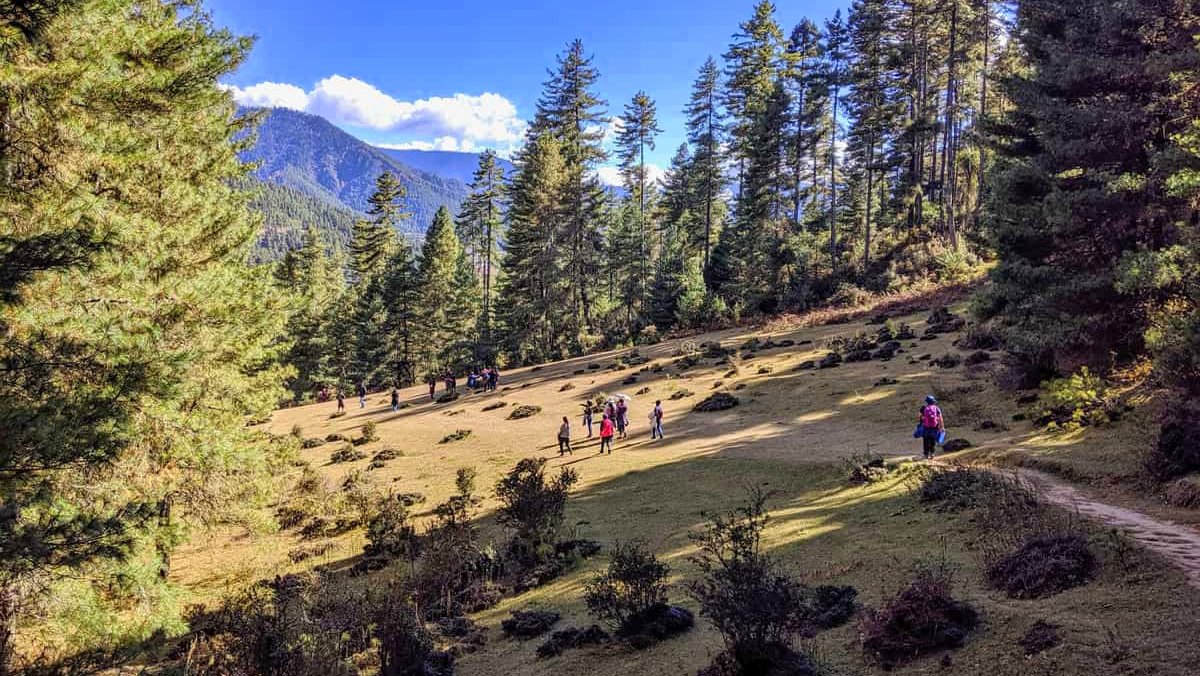
- Location and Accessibility: The Gangtey Nature Trail begins near the Gangtey Monastery in the Phobjikha Valley, easily accessible by road from the town of Wangdue Phodrang. The trail is well-marked and maintained, making it accessible for hikers of all skill levels.
- Hiking Experience: This trail is one of the easier hikes in Bhutan, offering a flat and leisurely walk that can be completed in about 1.5 to 2 hours. It stretches approximately 4 kilometers through meadows, forests, and past rural farmhouses, ending at the local school.
- Natural Beauty: The Phobjikha Valley is renowned for its wide, flat valley bottom and is one of the few glacial valleys in Bhutan. The area is a designated conservation zone and a vital habitat for the black-necked cranes that migrate here from the Tibetan Plateau during the winter.
- Flora and Fauna: Along the trail, hikers can enjoy the sights of lush grasslands and thickets of dwarf bamboo – a favorite food of the black-necked cranes. The area is also rich in other bird species and the occasional sighting of wildlife such as wild boars.
- Cultural Highlights: The trail provides glimpses of traditional Bhutanese rural life. The path passes close to several village homes and the impressive Gangtey Monastery at the start, giving hikers a feel for both the natural and human-influenced landscapes of Bhutan.
- Photographic Opportunities: The panoramic views of the valley, especially with the cranes and other wildlife, make for excellent photography. The trail also offers picturesque scenes of the Gangtey Monastery against the backdrop of the valley.
- Preparation and Considerations: Given the valley’s altitude and open spaces, it can be quite cold, especially outside of summer. Dressing in layers, carrying water, and wearing sturdy footwear are recommended. The trail is mostly exposed, so sun protection is also advisable.
The Gangtey Nature Trail is an ideal choice for those who appreciate the tranquility of nature and are interested in bird watching or simply enjoying a leisurely walk in one of Bhutan’s most beautiful valleys. It’s an enriching experience that combines ecological beauty and cultural richness, providing a full and satisfying half-day outing.
Best Time for Day Hikes in Bhutan
The best time for day hikes in Bhutan varies depending on the experience you're seeking. Each season offers unique landscapes, weather conditions, and opportunities, making Bhutan a year-round destination for hiking enthusiasts. Here's a seasonal breakdown to help you plan your perfect hiking adventure:
Spring (March to May)
- Best Time for: Enjoying vibrant landscapes, blooming flowers, and pleasant weather.
- Weather: Mild temperatures with clear skies. Rhododendrons and other wildflowers are in full bloom.
- Advantages: Ideal for photography and experiencing Bhutan's natural beauty at its peak.
- Considerations: Trails can be busier with other hikers during this popular season.
Summer (June to August)
- Best Time for: Lush green landscapes and fewer crowds.
- Weather: Warm and humid with frequent rainfall due to the monsoon season.
- Advantages: Less crowded trails and vibrant, green landscapes.
- Considerations: Rain can make some trails slippery and challenging; occasional landslides may occur.
Autumn (September to November)
- Best Time for: Clear skies, stunning mountain views, and cultural festivals.
- Weather: Cool and dry with excellent visibility and crisp air.
- Advantages: Perfect for enjoying clear views of the Himalayas and experiencing cultural festivals.
- Considerations: A popular season, so some trails may be more crowded.
Winter (December to February)
- Best Time for: Quiet trails and snowy landscapes.
- Weather: Cold, with snow at higher altitudes and milder temperatures in the lower valleys.
- Advantages: Serene hiking experience with snow-covered landscapes.
- Considerations: Some high-altitude trails may be inaccessible due to snow; be prepared for cold weather.
Spring and autumn are generally the best seasons for day hikes in Bhutan, offering ideal weather and stunning natural beauty, while summer and winter provide unique hiking experiences for those seeking lush landscapes or snowy tranquility.
Essential Tips for the Best Day Hikes in Bhutan
Embarking on a day hike in Bhutan is a rewarding experience, offering breathtaking views and a deep connection with the country's cultural heritage. To make the most of your adventure, here are some essential tips to keep in mind:
- Acclimatize to the Altitude: Spend a couple of days at higher elevations before your hike to help prevent altitude sickness.
- Dress in Layers: The weather can change quickly in the mountains, so wear layers to adjust to temperature fluctuations throughout the day.
- Wear Sturdy Footwear: Invest in good hiking boots with strong ankle support to handle Bhutan’s varied terrain.
- Stay Hydrated: Carry plenty of water and drink regularly to maintain energy levels and prevent dehydration at high altitudes.
- Pack Snacks: Bring energy-boosting snacks like nuts, dried fruits, or energy bars to keep you fueled during the hike.
- Respect Local Customs: Dress modestly and be mindful of Bhutanese customs, especially when visiting monasteries or sacred sites along the trail.
- Use Sun Protection: Wear sunscreen, a hat, and sunglasses to protect yourself from the strong sun at higher altitudes.
- Carry a Small First Aid Kit: Include essentials like bandages, antiseptic wipes, and pain relievers to handle minor injuries.
- Start Early: Begin your hike in the morning to enjoy cooler temperatures and avoid afternoon rain showers.
- Hire a Local Guide: A guide can enhance your experience with local knowledge and ensure your safety on more challenging trails.
- Respect Wildlife: Maintain a safe distance from animals, and avoid feeding them to preserve their natural behavior.
- Leave No Trace: Carry out all trash and follow "Leave No Trace" principles to protect the natural environment.
By following these essential tips, you’ll be well-prepared to enjoy Bhutan’s stunning landscapes and rich cultural experiences on your day hikes. These guidelines will help ensure your adventure is safe, enjoyable, and respectful of the pristine environment you’re exploring.
Bhutan's day hikes offer a unique opportunity to experience the country's stunning natural beauty and rich cultural heritage up close. From the iconic Tiger's Nest Monastery to the serene landscapes of the Gangtey Nature Trail, each hike presents a different facet of this mystical kingdom. Whether you're ascending steep mountain paths to reach ancient monasteries or strolling through lush valleys, these treks promise breathtaking views and spiritual enrichment. Ideal for adventurers of all levels, these trails not only challenge the body but also invigorate the soul, making every step a journey through the heart of Bhutan.
FAQs of the Best Day Hikes in Bhutan
Q: What are the top day hikes in Bhutan?
A: Some of the most popular day hikes include the Tiger's Nest Monastery (Paro Taktsang), Chele La Pass, Phajoding Monastery, Khamsum Yulley Namgyal Chorten, and the Gangtey Nature Trail. Each offers unique landscapes and cultural insights.
Q: How difficult are the hikes in Bhutan?
A: The difficulty levels vary. The Tiger's Nest hike is considered moderate to strenuous, while the Gangtey Nature Trail is easier and suitable for all fitness levels. Chele La Pass and Khamsum Yulley are moderate hikes that most healthy individuals can manage.
Q: What should I bring on a day hike in Bhutan?
A: Essential items include water, snacks, a good pair of hiking boots, weather-appropriate clothing, a hat, sunscreen, and a camera. Don’t forget to carry a small first-aid kit and any personal medication.
Q: Do I need a guide for hiking in Bhutan?
A: While not mandatory for all hikes, having a guide can enhance your experience by providing insights into the local culture and ensuring you don’t lose your way. Guides are particularly recommended for more remote or less marked trails.
Q: What is the best time of year to go hiking in Bhutan?
A: The best times for hiking in Bhutan are during the spring (March to May) and autumn (September to November) when the weather is clear, and the views are spectacular. Summer can be wet due to the monsoon, and winter may see snow in higher altitudes.
Q: Are there any permits required for hiking in Bhutan?
A: For most day hikes, no special permits are needed beyond the standard tourist visa and entry fee for Bhutan. However, it's always best to check with your tour operator or local contacts for any recent changes.
Q: How can I prepare for high-altitude hikes?
A: To prepare for high-altitude hikes, ensure you are in good physical condition, stay hydrated, and spend a few days at elevation to acclimate before your hike. It’s also wise to learn the signs of altitude sickness.
Q: Can I encounter wildlife during hikes in Bhutan?
A: Yes, Bhutan's trails can provide opportunities to see wildlife, including various bird species, especially on trails like the Gangtey Nature Trail. Always keep a safe distance and follow guidelines to ensure both your safety and that of the wildlife.
Q: How long do the hikes usually take?
A: Depending on the trail and your pace, hikes can range from a couple of hours to a full day. For example, the Tiger's Nest Monastery hike typically takes about 5-6 hours for a round trip.
Q: Are there facilities on the hiking trails?
A: Facilities vary by trail. While some may have rest stops or basic amenities, others, especially in more remote areas, will not have any facilities. Always plan to carry out what you bring in, respecting the natural environment.


